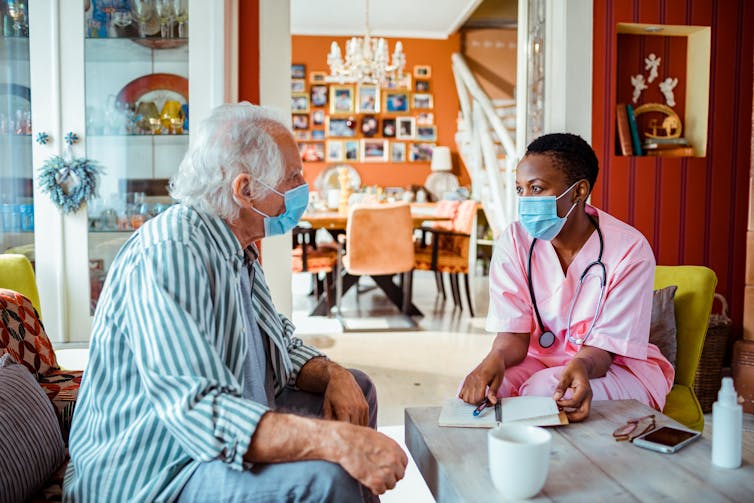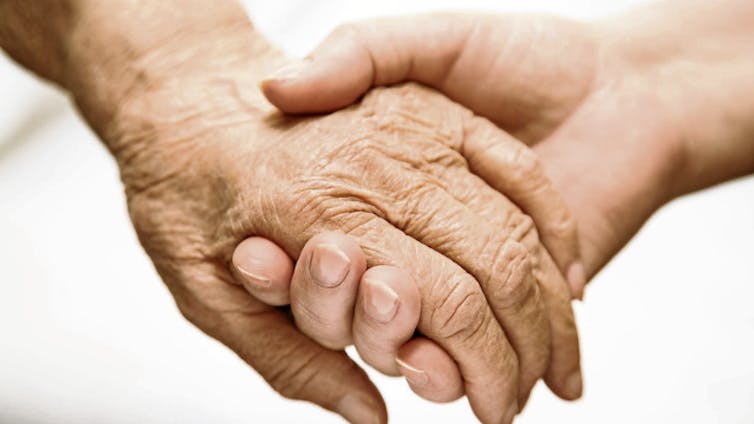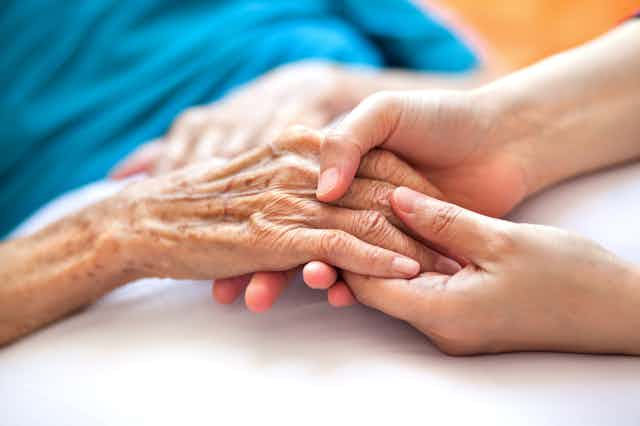Before the pandemic, around 1 in 10 older adults in the U.S. experienced elder mistreatment. In 2020, this number doubled to 1 in 5 – a nearly 84% increase.
Mistreatment comes in many forms, including various types of abuse, neglect, exploitation and fraud. Adult Protective Services agencies exist in every U.S. state and territory to investigate adult mistreatment reports and work with clients to address their needs. APS staff members gather information from clients, alleged abusers and third parties such as family members, friends or neighbors to determine whether there is enough evidence to support a mistreatment claim. They also use this information to match clients to social, health care, legal or other services as desired.
Since APS agencies do not receive dedicated federal funding, and regulations vary by state and local jurisdiction, standardized assessment of APS involvement in mistreatment cases has been challenging. As an elder justice researcher, I wanted to examine what differences APS agencies make in their clients’ lives and, more specifically, what services can help ameliorate mistreatment.
In our recently published study, my colleagues and I identified the four most common types of elder mistreatment and found that while APS can help ameliorate abusive situations for older adults, different types of elder mistreatment require different services to address them.
Matching service to mistreatment
We collaborated with San Francisco and Napa APS agencies in California to identify which services decreased the severity of elder mistreatment. In California, county APS agencies focus on nine types of mistreatment: emotional abuse (called “mental suffering” by the California APS), physical abuse, financial abuse, neglect, sexual abuse, isolation, abandonment, abduction and self-neglect.
We trained San Francisco and Napa APS staff members to evaluate and measure how effective provided services are at reducing mistreatment. Staffers documented what types of services were given for each type of mistreatment and recorded how severe mistreatment was before and after services were provided.

We found that APS interventions were able to decrease abuse severity for four of the most common types of elder mistreatment: 43% for emotional abuse, 62% for physical abuse, 31% for financial abuse and 72% for neglect.
Not surprisingly, we found that services targeting the specific problem worked best. Victims and survivors of physical and emotional abuse benefited most from care and case management services. Emotional abuse victims benefited from additional legal services. Financial abuse victims had better outcomes with financial planning services. Finally, victims of neglect benefited most from care and case management as well as language translation and services provided to their alleged abusers, such as counseling and behavioral health treatments.
Shedding light on APS service outcomes
There are still many unknowns about Adult Protective Services report outcomes.
Notably, APS agencies cannot force their clients to accept services they do not want unless a health professional determines that they don’t have decision-making capacity. And once an APS case is closed, agencies will not know what happens to these older adults unless they or someone else sends another report.
My colleagues and I are currently conducting another study following up with APS clients after case closure. In addition to tracking mistreatment severity across time, we will also track other longer-term factors that affect one’s ability to live independently and safely, such as physical and mental health. Those who decline services will be a natural comparison group.
In addition to their elderly clients, many APS agencies also work with dependent adults, often younger people with physical, mental or intellectual disabilities. Not much is known about mistreatment in this vulnerable group. While our study did not have a large enough sample size to focus on this population, we would like to do so in the future as we collect more data.

Finally, self-neglect, in which an older or dependent adult puts their own health or safety at risk, makes up the majority of mistreatment cases APS receives. My colleagues and I are also working to identify subtypes of self-neglect and which services would best address them.
Adult Protective Services agencies are the only governmental entities dedicated to addressing older and dependent adult mistreatment. However, even with APS staffers ready to connect older and dependent adults with service providers, clients need to be willing to accept help. APS is not a silver bullet that makes elder mistreatment magically disappear.
It takes a village – starting with recognizing when elder mistreatment is happening, and taking action to stop it.

